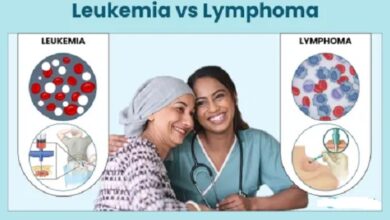Anemia vs Low iron Similarities and FAQs
Anemia vs Low iron
In this article we will provide you the information about the Anemia vs Low iron Similarities and FAQs.
What does anemia mean?
Anemiais a common disease characterized by low levels of red blood cells (hemoglobin) in the blood. This affects the body’s ability to transport oxygen from the lungs to the rest of the body, causing symptoms such as fatigue and general weakness. Anemia can also be caused by a nutritional deficit or iron deficiency, as well as other underlying medical problems or genetic disorders. People with anemia often experience physical and mental symptoms related to a lack of adequate oxygenation to their tissues and organs. Treatments vary depending on individual factors and may include vitamin supplementation or prescription medications to help raise hemoglobin levels, as well as dietary solutions to improve nutritional absorption.
What does low iron mean?
Low iron is a condition in which the body has less iron than normal. It is known as iron deficiency anemia or iron deficiency. This is due to lack of adequate absorption, storage or intake of the mineral. The result is a low level of hemoglobin, which makes it difficult for red blood cells to transport oxygen throughout the body and can cause extreme tiredness, breathing problems and excessive paleness. For these reasons, supplementation along with a healthy diet rich in lean meat, fruits and vegetables are important to replenish normal iron levels.
Similarities between anemia and low iron
The similarities between anemia and low iron are many. Anemia is a disease characterized by lower than normal levels of hemoglobin (a red blood cell protein), while low iron is a lack of iron in the blood. These two conditions are closely related, since iron is necessary to produce red blood cells and its lack leads to lower hemoglobin levels. Additionally, both can cause symptoms such as fatigue, muscle weakness, or excessive paleness; However, treatments differ depending on each case. In general, receiving iron supplementation , in addition to other nutrients such as vitamins B12 and folate, helps relieve the symptoms of both iron and anemia.
Differences between anemia and low iron
Anemia is a disorder in which the number of red blood cells or hemoglobin in the blood is below the normal level. Red blood cells are responsible for transporting oxygen to all cells and tissues in the body. Anemia can be caused by nutritional deficiencies, such as a lack of iron, vitamin B12 or folic acid, as well as environmental and genetic problems. Low iron , also known as iron deficiency, refers to a significant reduction in normal blood levels of this mineral essential to our health. This condition is usually related to some form of anemia since iron participates directly in the efficient processing of oxygen throughout the body.
Frequent questions about Anemia vs Low iron
What causes having anemia?
Anemia can be caused by a variety of factors, including a diet low in iron and vitamin B12, chronic or inflammatory diseases (such as arthritis), gastrointestinal problems, excessive bleeding, certain medications, and some genetic disorders.
What happens to a person with anemia?
Anemia is a disorder in which red blood cells or the amount of iron in the blood is low. This can cause symptoms such as fatigue, weakness, paleness, and difficulty breathing. Other symptoms include irregular heartbeat, mood changes, and problems concentrating.
What happens when iron is low?
When iron is low, symptoms such as tiredness, weakness or lack of energy may occur. It is recommended to consult a health professional to confirm if there is an iron deficiency and determine the best treatment to correct it.
What low iron level is worrisome?
A low iron level of concern is a measurement below the normal average for age and sex. Normal standards vary slightly between laboratories, but a reading of less than 8-12 micrograms/deciliter (mcg/dL) for adult men or 10-15 mcg/dL for adult women is generally considered abnormal.
What to do to increase iron in the blood?
To increase iron in the blood, it is important to eat a balanced diet rich in foods that contain iron such as red meat, fish, green leafy vegetables such as spinach and chard, beans and legumes. It is also recommended to take vitamin supplements with iron to complement the intake of this mineral. If levels drop well below the normal average, your doctor may recommend blood transfusions or iron injections to raise them.




